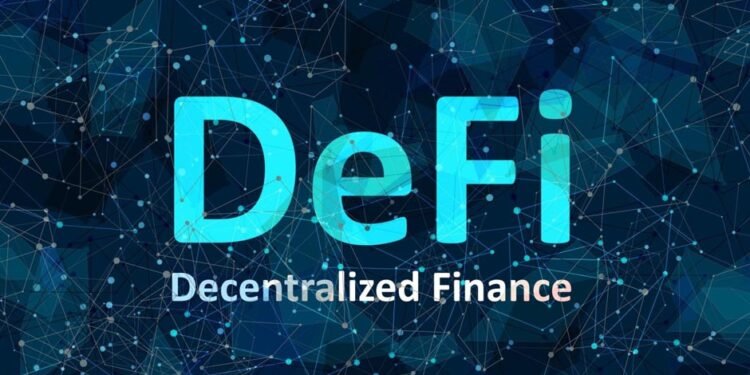In the introduction, Decentralized Finance, or DeFi, signifies a significant shift in the financial sector, embodying a transformative movement. DeFi encompasses a range of decentralized applications (dApps) and protocols leveraging blockchain technology, to provide an alternative to conventional financial systems. The genesis of DeFi lies in the aspiration to move away from centralized structures inherent in traditional financial systems, marked by intermediaries and inherent limitations. DeFi, as a response to these limitations, emphasizes principles such as decentralization, transparency, and inclusivity. At the core of this decentralized ecosystem are the DeFi protocols, intricately designed to facilitate diverse financial services. These protocols empower users to engage in transactions, lending, borrowing, and interest-earning, all without dependence on traditional financial institutions. In addition, you can find an investment education company to start your learning journey by getting more info here.
Core Principles of DeFi
Decentralization and Trustlessness
Decentralization in DeFi eliminates the need for intermediaries, empowering users with control over their assets. Trustlessness ensures that transactions and agreements are executed without reliance on a central authority, enhancing security and reducing counterparty risk.
Smart Contracts and Automation
Smart contracts, self-executing agreements with predefined rules, play a pivotal role in DeFi. These programmable contracts automate processes, ensuring transparency and efficiency in transactions, lending, and other financial activities.
Interoperability and Open Source
DeFi protocols emphasize interoperability, enabling different blockchain networks to interact seamlessly. Open-source nature fosters collaboration, allowing developers to contribute and enhance protocols collectively.
Key Components of DeFi Protocols
Decentralized Exchanges (DEXs)
- Overview of DEXs
Decentralized exchanges provide a peer-to-peer network for users to exchange assets directly without intermediaries. They leverage smart contracts to execute and settle trades automatically.
- Liquidity Pools and Automated Market Makers (AMMs)
Liquidity pools, fueled by user-contributed assets, enable decentralized exchange. AMMs, algorithms facilitating automatic asset pricing, enhance liquidity and efficiency in DeFi exchanges.
Decentralized Lending and Borrowing
- Peer-to-Peer Lending
DeFi protocols enable peer-to-peer lending, allowing users to lend and borrow assets directly. This decentralized lending model removes the need for traditional financial intermediaries.
- Collateralization and Overcollateralization
Collateralized lending ensures security by requiring borrowers to stake assets as collateral. Overcollateralization safeguards against defaults, maintaining the stability of the lending ecosystem.
Decentralized Stablecoins
- Algorithmic Stablecoins
Algorithmic stablecoins use smart contracts and algorithms to maintain a stable value, reducing reliance on centralized reserves.
- Collateral-Backed Stablecoins
Collateral-backed stablecoins peg their value to external assets, ensuring stability through collateralization.
Challenges and Risks in DeFi
Smart Contract Vulnerabilities
Despite their advantages, smart contracts are susceptible to vulnerabilities, and their exploitation can lead to financial losses. Rigorous auditing and continuous improvements are crucial to mitigate these risks.
Regulatory Uncertainty
DeFi operates in a regulatory gray area, posing challenges for adoption. Addressing regulatory concerns and establishing a clear framework is essential for sustained growth.
Market Volatility and Price Oracles
DeFi protocols often rely on accurate price data for decision-making. The reliance on external price oracles makes the ecosystem vulnerable to inaccuracies and manipulation.
Advances in DeFi
Layer 2 Scaling Solutions
To address scalability issues, Layer 2 solutions, such as sidechains and rollups, enhance the speed and efficiency of DeFi transactions while minimizing congestion on the underlying blockchain.
Cross-Chain Integration
Cross-chain compatibility allows DeFi protocols to operate seamlessly across multiple blockchain networks, promoting broader adoption and increased functionality.
Governance Models and DAOs (Decentralized Autonomous Organizations)
Governance models, often facilitated by DAOs, empower users to participate in decision-making processes, fostering a decentralized approach to protocol management.
Adoption and Impact of DeFi
Inclusion and Accessibility
DeFi’s decentralized nature promotes financial inclusion by providing access to financial services for individuals who are unbanked or underbanked.
DeFi in Traditional Finance
The integration of DeFi principles into traditional finance is a gradual but transformative process, with potential benefits for efficiency, transparency, and accessibility.
Societal and Economic Implications
DeFi’s impact extends beyond the financial realm, influencing societal structures and economic paradigms by challenging traditional power dynamics.
Future Trends and Developments
Integration with Web3 and NFTs
DeFi’s convergence with Web3 technologies and Non-Fungible Tokens (NFTs) presents new opportunities for collaboration and diverse financial applications.
Enhanced Security Measures
Ongoing improvements in security protocols, including advancements in encryption and consensus mechanisms, are critical for fortifying DeFi against emerging threats.
Potential Integration with Central Bank Digital Currencies (CBDCs)
Exploring synergies between DeFi and Central Bank Digital Currencies may lead to novel financial structures, offering benefits such as enhanced efficiency and reduced counterparty risk.
Conclusion
In conclusion, a retrospective examination of DeFi’s journey, spanning from its conceptualization to its present state, highlights its profound influence on reshaping financial ecosystems. The impact of DeFi extends beyond decentralization, fundamentally altering how individuals engage with and perceive the broader economic landscape. Moving forward, there is a call for ongoing exploration and comprehension of DeFi’s principles, challenges, and advancements, as this will play a pivotal role in ensuring its continual growth and seamless integration into global financial systems.












